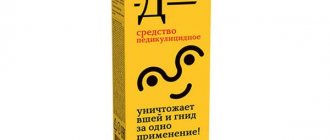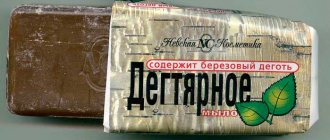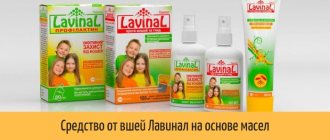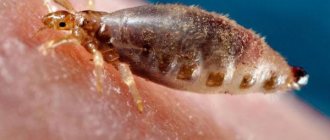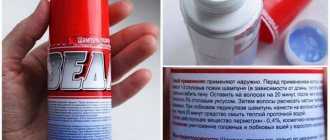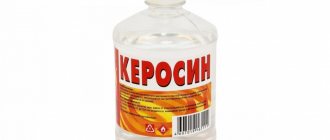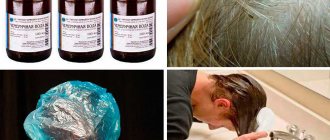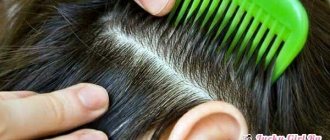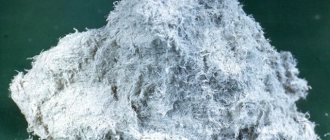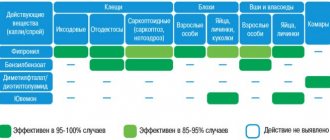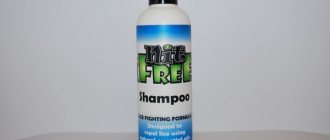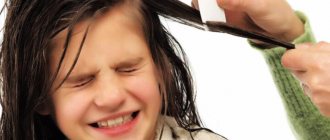There are few diseases that people are embarrassed to talk about out loud. Pediculosis is one of them. Although much has already been written and said that this disease is not a sign of uncleanliness, people try to get rid of uninvited guests quickly and as unnoticed as possible by others.
Among the new drugs for lice and nits, a confident leadership position is occupied by an old, time-tested remedy - vinegar, familiar to everyone.
Does vinegar help in the fight against lice?
Despite the widespread use of vinegar against lice and nits, some people mistakenly believe that the product completely eliminates head lice, affecting adults, eggs and nymphs (newly hatched lice). In reality, acetic acid is not toxic to lice, so it cannot directly attack them. Instead, it dissolves the protective layer and adhesive base surrounding the nit. With the help of this shell, the eggs are held on the hair until the nymphs hatch.
The acetic acid method reduces the number of nits in the hair because most of them simply fall off. The remaining eggs can be gradually combed out with a fine-toothed comb. Vinegar does not affect adult lice, but is destructive to fragile nymphs, which generally helps in treatment.
A course of treatment
To completely get rid of eggs, 4-5 procedures are carried out. The quantity is determined individually. Nits can become entangled in hair. After a few days, new lice hatch from them and begin to reproduce again.
Insects will gradually be eliminated from the hair. With regular use, egg deposition is prevented. The patient or the child’s parents need to carefully examine the head in order to notice nits in a timely manner. Even with a small number of them, the procedure is repeated and continued until the parasites are completely destroyed.
How to get rid of lice using vinegar
Later in the article we will write in detail about how to remove lice with vinegar. But don’t be surprised if there are still live lice on your hair after the first use. As previously described, apple cider vinegar does not kill parasites. Therefore, to completely get rid of them, you will have to carry out a set of procedures.
The lifespan of one louse can reach a whole month, and a new individual hatches from the laid egg within a week. Therefore, when using vinegar essence to treat head lice, you need to understand that the course will take 3-4 weeks. The procedure can be repeated daily as long as there is an intense nit infestation. But we must not forget that acid dissolves fat in the hair, so the curls may weaken.
FAQ
Expert opinion
Alexandra Valerievna
Doctor-Trichologist
Can vinegar be used by children and pregnant women?
Children can be treated for head lice in this way from the age of six, using apple cider vinegar as a gentler option.
It is also better for pregnant women to use apple cider vinegar if there are no signs of toxicosis. Vinegar does not penetrate the blood and will not harm the unborn child in any way.
Can I use apple cider vinegar?
Yes, it can be used. Apple cider vinegar is just as effective and has a milder effect and is less irritating to the respiratory tract. The ideal option is homemade apple cider vinegar made from natural ingredients.
Recipe
Existing types of vinegar differ in concentration. For effective removal, it is necessary that the solution contains about 5% acid. Using a product with a higher concentration can cause scalp irritation or even a burn. Regular 9% table vinegar is inexpensive. For the recipe, it is recommended to dilute it with water in a ratio of 1:2 so that the resulting solution contains 4.5% acid.
You can use more expensive and rich red wine vinegar (5-7%). In this case, you need to carefully study the label to find out the actual acid content and calculate the ratio of product and water for the solution. If the concentration is insufficient, the product will not dissolve the nit shell.
How to treat your head with vinegar solution
Having a bite available and knowing how to dilute it, you can begin the procedure. It is best to carry out treatment in the bathroom, during water procedures. First, the hair must be moistened with water, but not too much, so that water does not drip from it. Then vinegar is applied to the entire length. Particular attention is paid to the root zone, since it is in this part of the hair shaft that nits attach and hatch.
When processing the head, try to cover the entire volume of hair. For medium-length curls you will need at least two glasses of vinegar. In order not to burn or dry out the skin, intensive rubbing into the head should be avoided. It will take 5 to 10 minutes to dissolve the exoskeletons of nits. After this time, the vinegar must be washed off under warm running water, remembering to close your eyes so that the acid does not irritate the mucous membranes.
Treatment of head lice with vinegar does not end there. Towel-dried hair should be combed with a fine-tooth comb to remove adult parasites and eggs that are not attached to the hair. For greater efficiency, you should use a metal comb designed specifically for combing out lice, rather than a regular comb. With this device, combing will only take 5 minutes.
Compound
Vinegar is extracted from food raw materials containing alcohol. The composition of the output product includes esters, aldehydes, complex alcohols and acids: acetic, malic, citric, tartaric.
The acids make vinegar a very caustic substance that has antiseptic properties. This liquid got its name because of its main component – acetic acid.
It is poisonous to living lice, but only greatly weakens adult lice, having a fatal effect on small and young insects. The same acid destroys the glue that attaches nits to the hair , although it does not harm the eggs themselves - they only fall off the hair, after which they must be combed out.
Types of vinegar:
- Alcoholic.
- Wine.
- Apple.
- Malt.
- Balsamic, etc.
IMPORTANT! caustic acetic acid that fights head lice , so any type of vinegar is suitable for treatment. The main thing is that the acid content is at least 5% .
This type of treatment is applicable even to children, but proportions must be observed so as not to burn the delicate children's skin.
How to remove nits with vinegar: precautions
When choosing this method of insect control, it is important to remember safety:
- 1. Acetic acid bleaches hair, so natural hair becomes at least a tone lighter; dyed hair can change color in an unpredictable way.
- 2. Inhaling acetic acid vapor is dangerous, so it is important to use a cap or polyethylene and carry out the treatment in a well-ventilated area.
- 3. Vinegar for nits on thick hair may need to be used every 2-3 days for a week to achieve complete removal of parasites.
Reviews
Maria, 30 years old: “My mother used vinegar to get rid of parasites when I was a child. When lice came with me from the camp a couple of times, vinegar immediately went to work. Therefore, when I discovered unwanted “tenants” in my child, I didn’t even think about how to deal with them. I added mustard to the product I tested in my childhood. It took 2 weeks for treatment. We're happy with the result!
Irina, 18 years old: “To my horror, I discovered lice after my next visit to the pool. I have long thick hair, and I really didn’t want to part with it because of the trouble that had arisen. I also didn’t dare to buy unknown drugs, because they are quite expensive. My mother suggested a solution, advising me to try a mixture of vinegar and olive oil. I did the treatment several times to be sure to get rid of lice. The main thing is that the hair was not damaged, it just became a little lighter.”
Svetlana, 50 years old: “Strangely enough, I only encountered the problem of head lice when my granddaughter started growing up. Maybe because she herself raised two sons whose heads were shaved or cut very short. The first reaction when, while braiding my granddaughter’s hair, I saw several parasites and then nits in her hair, was shock. And even panic: what to do? I was embarrassed to ask my friends such questions. I used the Internet and looked at many sites. As the most gentle and safest method, I chose treatment with vinegar and sunflower oil. And I must say I didn’t regret it - in just a few days we managed to remove all the lice and nits.”
Despite significant improvements in living conditions, pediculosis remains a common disease. Visiting public places (swimming pools, hairdressers, camps, hotels, etc.) increases the risk of infection. Therefore, the question of how to remove lice and get rid of nits does not lose its relevance. Destruction of parasites with vinegar is one of the simplest and most affordable methods.
Apple cider vinegar for lice
Removing lice is also possible using apple cider vinegar. When purchasing a product in a consumer store, you need to make sure that it is unfiltered and pasteurized. Most brands produce apple cider vinegar in a concentration (5%) sufficient to dissolve the nit shell. The use of 3% of the product may not be effective in the treatment of head lice. You should avoid getting malic acid on your clothes because it leaves permanent marks.
Vinegar and oil for lice
According to research in the field of lice treatment, the following types of essential oils have a toxic effect on nits and lice:
- • ylang-ylang
- • tea tree oil;
- • anise oil
Olive oil and butter have a different effect on lice. Enveloping the adult, the oil deprives it of oxygen, as a result of which the parasite dies. The method involves applying the product to all hair for 10 minutes. The product is then washed off using a medicated shampoo for a more effective result.
Pediculosis. Symptoms
The patient experiences severe itching, which is localized on the epidermis. The bite site begins to hurt, papules or redness appear. White lice eggs, called nits, can be found in hair.
Characteristic symptoms can be identified:
- increased irritability and nervousness;
- insomnia and sleep disturbance;
- itching in the back of the head and behind the ears.
Note! Patients who constantly scratch bite sites are faced with crusts and additions of purulent infections.
As a result, pyoderma develops, which is accompanied by enlarged lymph nodes.
The patient becomes irritable
Vinegar and Tea Tree Oil Recipe
The specific smell of tea tree oil helps repel and destroy lice. Add 5-10 drops of oil to the prepared vinegar-water solution and stir. The mixture is applied to a sponge and rubbed into the scalp and hair.
After 25-30 minutes, the mixture is washed off with plenty of water and shampoo. Then it is recommended to apply a few more drops of one oil to the strands. This can be done conveniently using a sponge. The procedure must be repeated 3 times over several days.
Contraindications and precautions
Vinegar-based products are not recommended for persons with individual intolerance to the product, as well as for those with extensive wounds on the scalp. It is better for pregnant women and people suffering from bronchial asthma to refrain from using vinegar to remove lice or take a solution with a minimum concentration.
The use of any of the recipes based on a water-vinegar solution requires compliance with precautions, namely:
- • ensure that vinegar does not get on open areas of the body or in the eyes;
- • protect your skin with a towel and your eyes with safety glasses;
- • during the procedure, do not allow the child to touch the head and hair with their hands;
- • do not use undiluted product, especially when removing lice from children;
- • if dizziness, nausea or shortness of breath occurs during the procedure, the person should be taken to fresh air;
- • if you feel a strong burning sensation on the skin, treatment should be stopped;
- • if vinegar accidentally gets into your eyes, you should immediately rinse them with plenty of warm water;
- • treatment of the head with vinegar solution should be carried out in a well-ventilated area.
Repeated use of the product may have a negative effect on the condition of the hair. They become thin and brittle. The effect of vinegar on colored hair is especially undesirable.
Other folk remedies
The simplest and at the same time radical home method of combating head lice is to cut your head bald. Since lice attach their eggs to hair in the root zone, the absence of hair eliminates any possibility of parasite activity. But not everyone will feel comfortable with a bald head.
Kerosene remains a popular method of treatment despite the fact that it can cause severe burns to the skin. Technical clarified kerosene somewhat minimizes the risk. The medicinal composition is as follows:
- • 1 tablespoon of kerosene;
- • 2 teaspoons olive oil;
- • 1 teaspoon of shampoo
The suspension is applied to the hair, then the head is wrapped in a plastic bag and wrapped in a towel. Leave in this position for an hour and rinse the mixture from your hair using shampoo. It’s a good idea to rinse your curls with a weak vinegar solution. The procedure is repeated after 3 days, but with a lower concentration of kerosene. Do not forget that kerosene fumes are flammable, so care should be taken.
